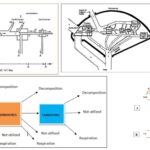Biochemistry 26 Views 1 Answers
Sourav PanLv 9October 11, 2024
What methods are used to diagnose complex V deficiencies?
What methods are used to diagnose complex V deficiencies?
Please login to save the post
Please login to submit an answer.
Sourav PanLv 9May 15, 2025
Diagnosing complex V deficiencies, which are part of the oxidative phosphorylation (OXPHOS) disorders, involves a combination of clinical evaluation, biochemical assays, and genetic testing. Here are the primary methods used for diagnosis:
1. Clinical Evaluation
- Patient History and Symptoms: A thorough clinical assessment is conducted, including a detailed patient history and evaluation of symptoms. Symptoms of complex V deficiency can vary widely and may include neurological issues, muscle weakness, and metabolic disturbances.
2. Biochemical Analysis
- Mitochondrial Biochemical Diagnostics: The most common method for diagnosing complex V deficiency is through mitochondrial enzyme assays. This involves:
- Muscle Biopsy: A small sample of muscle tissue is obtained and analyzed for the activity of the OXPHOS complexes, including complex V. The activity levels of complex V are compared to normal ranges to identify deficiencies.
- Respiratory Chain Enzyme Activity: The activities of all five OXPHOS complexes (I to V) are typically measured in muscle or fibroblast samples. A significant reduction in complex V activity indicates a deficiency 6.
3. Genetic Testing
- Molecular Genetic Analysis: Genetic testing is performed to identify mutations in the nuclear or mitochondrial DNA that are associated with complex V deficiency. This can include:
- Next-Generation Sequencing (NGS): This method allows for the simultaneous analysis of multiple genes associated with mitochondrial function, including those encoding subunits of complex V and assembly factors.
- Targeted Gene Panels: Specific panels can be designed to test for known mutations in genes related to complex V assembly and function 1.
4. Imaging Studies
- Magnetic Resonance Imaging (MRI): In some cases, MRI may be used to assess neurological involvement, especially if there are signs of encephalopathy or other central nervous system symptoms.
5. Metabolic Testing
- Lactate and Pyruvate Levels: Blood tests may be conducted to measure lactate and pyruvate levels. Elevated levels of these metabolites can indicate mitochondrial dysfunction, including complex V deficiency, as a result of impaired ATP production and increased anaerobic metabolism.
6. Functional Assays
- Cellular Respiration Studies: In some cases, fibroblasts or other cell types may be cultured, and their respiratory function can be assessed using high-resolution respirometry. This allows for the evaluation of mitochondrial respiration and ATP production in response to various substrates and inhibitors.
0
0 likes
- Share on Facebook
- Share on Twitter
- Share on LinkedIn
0 found this helpful out of 0 votes
Helpful: 0%
Helpful: 0%
Was this page helpful?




